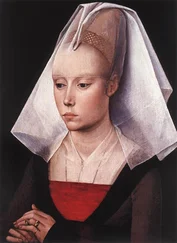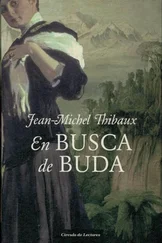1 Cover
2 Title Page
3 Copyright First published 2021 in Great Britain and the United States by ISTE Ltd and John Wiley & Sons, Inc. Apart from any fair dealing for the purposes of research or private study, or criticism or review, as permitted under the Copyright, Designs and Patents Act 1988, this publication may only be reproduced, stored or transmitted, in any form or by any means, with the prior permission in writing of the publishers, or in the case of reprographic reproduction in accordance with the terms and licenses issued by the CLA. Enquiries concerning reproduction outside these terms should be sent to the publishers at the undermentioned address: ISTE Ltd 27-37 St George’s Road London SW19 4EU UK www.iste.co.uk John Wiley Sons, Inc 111 River Street Hoboken, NJ 07030 USA www.wiley.com © ISTE Ltd 2021 The rights of Jean-Michel Réveillac to be identified as the author of this work have been asserted by him in accordance with the Copyright, Designs and Patents Act 1988. Library of Congress Control Number: 2021944438 British Library Cataloguing-in-Publication Data A CIP record for this book is available from the British Library ISBN 978-1-78630-738-5
4 Preface
Target audience Target audience This book is intended for all those who, amateur or professional, are interested in sound recording, recording and mixing in the field of singing and voice or musicians, performers, commentators and composers. The work presented in some sections requires minimum knowledge in the field of acoustics and digital audio. You must have a good knowledge of your computer’s operating system (paths, folders and directories, files, names, extensions, copying, moving, etc.) and know how to handle a DAW (Digital Audio Workstation), such as Avid Pro Tools, Apple Logic Pro X, Ableton Live, Steinberg Cubase, FL Studio, MOTU Digital performer, Cockos Reaper, etc., or a digital integrated studio, such as Tascam DP-03SD, Tascam DP32, Roland VS-1680, Akai DPS16HD, Yamaha AW4416, etc.
Structure and contents of the book Conventions Vocabulary and definition Acknowledgments
5 Introduction
6 1 Processing Hardware and Software 1.1. The materials 1.2. The software 1.3. Conclusion
7 2 Configuration and the Audio System 2.1. The capture and processing chain 2.2. Microphone preamplifiers 2.3. Digital audio interfaces 2.4. Multi-channel headphone amplifiers 2.5. Monitoring speakers 2.6. Amplifiers for passive speakers 2.7. Monitoring controllers 2.8. Conclusion
8 3 Voice Recording 3.1. Artist, comfort and environment 3.2. The choice of microphone 3.3. Constraints and accessories 3.4. Positioning the microphone 3.5. Feedback 3.6. The voice-only mix 3.7. Recording multiple performers 3.8. Recording a choir 3.9. Recording a voice-over 3.10. Conclusion
9 4 Special Effects 4.1. The vocoder 4.2. The talkbox 4.3. Auto-tune 4.4. Melodyne 4.5. Voice processors 4.6. Finally
10 Conclusion
11 Appendices
12 Appendix 1 Sound UnitA1.1. Introduction A1.2. Bel and decibel A1.3. The different variants of the dB A1.4. Conclusion
13 Appendix 2 Audio ConnectivityA2.1. Introduction A2.2. Coaxial jack A2.3. XLR plug A2.4. XLR cables and adapter jacks A2.5. USB connector A2.6. Sub-D connector A2.7. BNC connector A2.8. RCA connector A2.9. Toslink connector A2.10. Conclusion
14 Appendix 3 Audio Processing PluginsA3.1. Introduction A3.2. Compression plugins A3.3. Equalization plugins A3.4. De-Esser plugins A3.5. Delay and reverb plugins
15 Appendix 4 Microphone PairsA4.1. Introduction A4.2. The AB pair A4.3. The XY pair A4.4. The ORTF pair A4.5. The MS pair A4.6. The Decca tree A4.7. The Blumlein method A4.8. The Faulkner Array A4.9. The sound-absorbing disk method A4.10. The artificial head A4.11. Conclusion
16 Appendix 5 Types of Software Plugins
17 Glossary
18 References Hyperlinks Software publishers Hardware manufacturers Talkback Plugins Acoustics Vocoder Home Studio Sound effects Audio filtering The voice Audio software tutorials Interfaces and communication General sites
19 Index
20 End User License Agreement
1 IntroductionFigure I.1. Some digital audio workstations (DAWs) – Figure I.2. The first portable tape player (Sony TPS-L2 – 1979) and the MP3 play...Figure I.3. An example of a home studio – source: thomann.de. For a color versio...
2 Chapter 1 Figure 1.1. The Urei 1176 LN studio compressor Figure 1.2. Attack and release during compression Figure 1.3. The shape of the compression curve as a function of the knee setting Figure 1.4. The influence of the rotation point Figure 1.5. A DBX 1231 2 x 31 band graphic equalizer Figure 1.6. A Tube-Tech PE1C parametric equalizer Figure 1.7. The Aphex EQF 500 semi-parametric equalizer Figure 1.8. The first EMT 250 digital reverberator, dating from 1976 Figure 1.9. The first convolution reverb, Sony DRE-S777 Figure 1.10. A magnetic tape reverb, Roland Space Echo RE-201 Figure 1.11. The main parameters of the reverberation Figure 1.12. The SPL 9629 studio de-esser Figure 1.13. Schematic diagram of a de-esser Figure 1.14. Equivalent of the de-esser with a filter and a compressor. Very oft...Figure 1.15. The principle of the expander Figure 1.16. The DBX 1074 gate expander Figure 1.17. The aural exciter model 602 from Aphex
3 Chapter 2Figure 2.1. Hardware–software package for a basic configuration. DAW = Digital A...Figure 2.2. A digital microphone with a headphone output and volume control (Rod...Figure 2.3. A classic configuration combining audio interface, microphone preamp...Figure 2.4. A typical setup with a digital mixer, an effect insert, a mic preamp...Figure 2.5. Configuration of a semi-professional studio. For a color version of ...Figure 2.6. A tube preamp – Tube-Tech PM1A. You can see the three tubes on their...Figure 2.7. Two ECC82 or 12AU7 (Mullard), widely used in tube preamplifiers Figure 2.8. A transistor preamp – AMS Neve 1073N. For a color version of this fi...Figure 2.9. A hybrid preamp – Universal Audio 710 Twin-Finity. For a color versi...Figure 2.10. SPL’s Fronliner hybrid preamp (preamp, compressor, limiter, equaliz...Figure 2.11. Two audio interfaces, Universal Audio Apollo Twin X Duo and MOTU 82...Figure 2.12. The different types of USB connectors found on digital audio interf...Figure 2.13. The different types of FireWire connectors Figure 2.14. The Thunderbolt connector (USB type C) Figure 2.15. PCIe Audio Interface, RME HDSPe AES. For a color version of this fi...Figure 2.16. An example of inputs and outputs on an MOTU 828 ES digital audio in...Figure 2.17. A headphone splitter, one input, four outputs, one volume control p...Figure 2.18. An 8-channel rackmount headphone amp with two stereo inputs (Tascam...Figure 2.19. The Hear Back Pro headphone mixing and monitoring distribution syst...Figure 2.20. A two-way crossover (Monacor DN-20). For a color version of this fi...Figure 2.21. Genelec 8040 (HP: 1” and 6.5”) and 8050 (HP: 1” and 8”) speakers Figure 2.22. A pair of Yamaha NS10-M speakers Figure 2.23. The frequency response curve of an NS10-M (source: www.soundofsound...Figure 2.24. P20-40 Schlumberger or SAF amplifier Figure 2.25. A Scientelec ORTF loudspeaker on its stand with its extractable P20...Figure 2.26. A pair of Studer A3 speakers Figure 2.27. A pair of Elipson 4240 (Ball 402 + P80 cabinet) Figure 2.28. A pair of Focal Twin6 speakers Figure 2.29. A pair of NHT M-100 speakers from 1994 Figure 2.30. A pair of JBL 4310 speakers from 1973 Figure 2.31. The characteristics of the JBL model 4310 Figure 2.32. Adam Audio A3X speakers Figure 2.33. Genelec 7050 CPM subwoofer (130 W to 24 to 120 Hz to 8” speaker) Figure 2.34. Schematic of the correct placement of a pair of proximity speakers Figure 2.35. The Yamaha A100 amplifier Figure 2.36. The Studer A68 amplifier Figure 2.37. The Amcron DC 300A amplifier Figure 2.38. The Amcron D-75 amplifier Figure 2.39. The Yamaha PX3 amplifier Figure 2.40. Mackie’s Big Knob passive controller Figure 2.41. SPL’s Crimson 3-active controller. For a color version of this figu...Figure 2.42. Dangerous D-box controller (front and back). For a color version of...
Читать дальше












